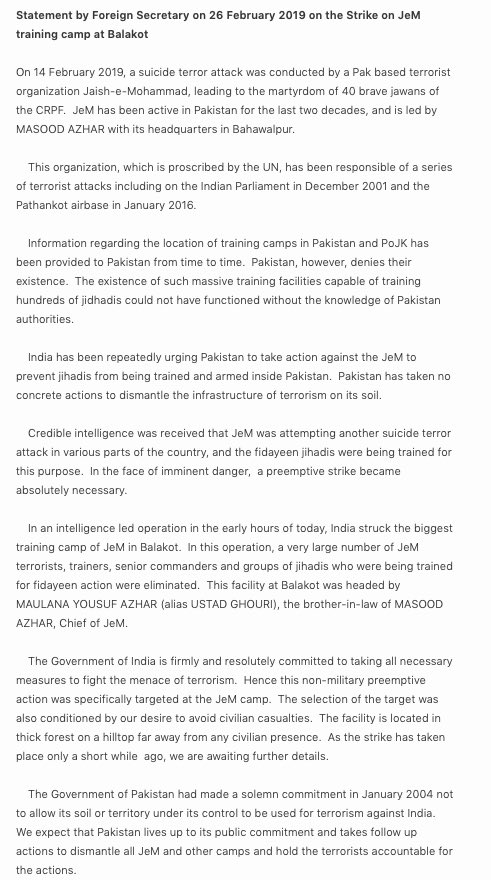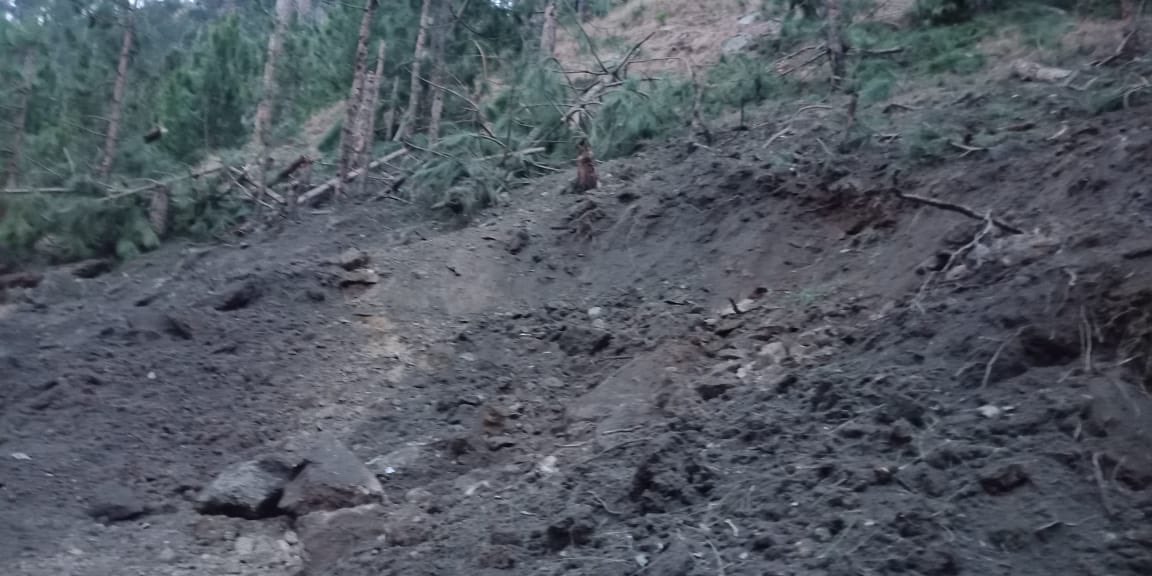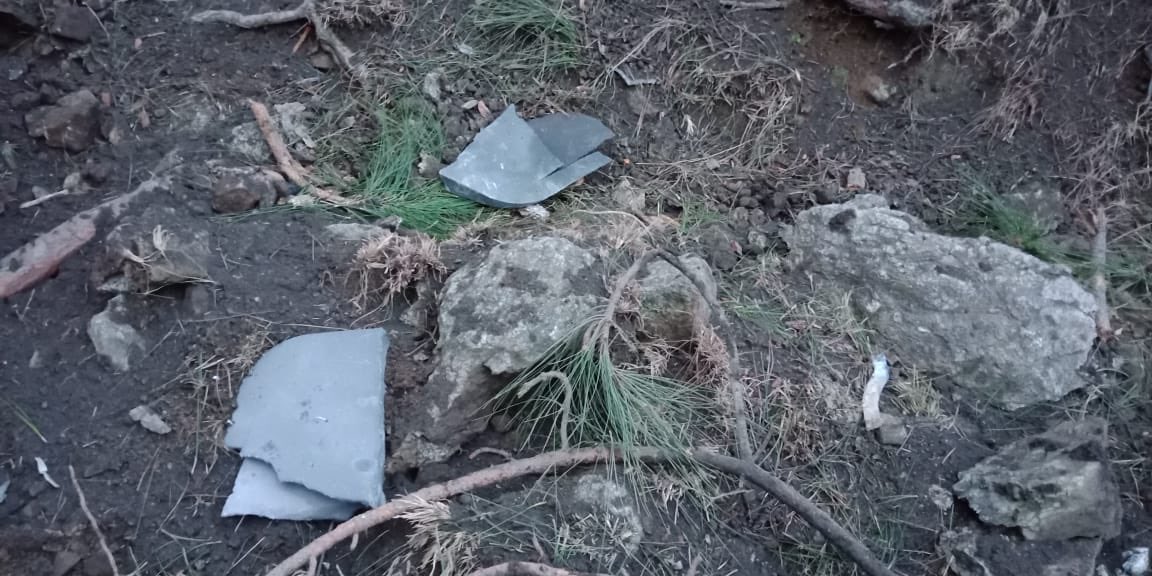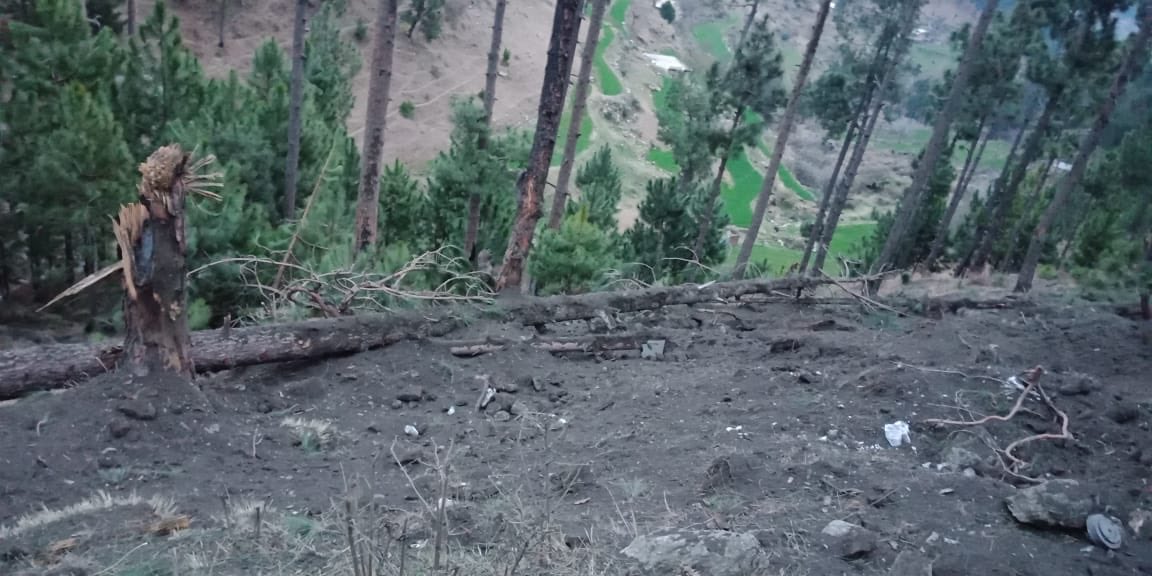Install the app
How to install the app on iOS
Follow along with the video below to see how to install our site as a web app on your home screen.
Note: This feature may not be available in some browsers.
You are using an out of date browser. It may not display this or other websites correctly.
You should upgrade or use an alternative browser.
You should upgrade or use an alternative browser.
Intia ja Pakistan
- Viestiketjun aloittaja ak.tied
- Aloitus PVM
Nuo saisi tapella ihan kahdestaan, tuskin kukaan menisi väliin.
Pakistan on Yhdysvaltojen liittolainen ja Intia jossain määrin Venäjän, joten ainakin jonkinlaista tukea tulis kummallekin. Tos jenkeille tilanne olis aika paskamainen, kun isot it-firmat on riippuvaisia Intiasta
7 Soldiers Killed In Terror Strike At Army Base Near Jammu, Hostages Saved
http://www.ndtv.com/india-news/3-so...mu-10-points-1631637?pfrom=home-lateststories
Soldier Beheading: Pak Terrorists Left Behind US Government Night Vision Device
http://www.ndtv.com/india-news/sold...ind-us-government-night-vision-device-1631429
http://www.ndtv.com/india-news/3-so...mu-10-points-1631637?pfrom=home-lateststories
Soldier Beheading: Pak Terrorists Left Behind US Government Night Vision Device
http://www.ndtv.com/india-news/sold...ind-us-government-night-vision-device-1631429
A new breed of militants is rising in Kashmir – young, educated, tech-savvy. Hindustan Times travelled to the valley to find out what is fuelling these young men to take up arms against the state. The ground reality in Kashmir is changing slowly but surely and it can be gauged even from plain statistics. If in 2013, 31 local youths joined militancy, the number for 2015 (till September-end) jumped to 66, according to police records. Kashmir's new-age militants are unlike any of their predecessors.
Aina välillä haastattelevat Intian televisiossa Yasin Malikia joka aikoinaan aloitti aseellisen vastarinnan Kashmirissa, mutta sittemmin miekkosesta on tullut jonkinlainen Kashmirin oma Gerry Adams.
https://en.wikipedia.org/wiki/Yasin_Malik
Vaimon haastattelu.
https://en.wikipedia.org/wiki/Yasin_Malik
Vaimon haastattelu.
On taas ollut niin hemmetin vaikea seurata tätä konfliktia, mutta jatketaan taas. Ei tunnu menevän kaikki hommat ihan piippuun Intian viranomaisilla. Lintuhauleilla väkijoukkoon ja osa jengistä lähtee silmäklinkalla, kun ei ole suojalaseja. Melkein kuin Ukrainassa.
http://www.mintpressnews.com/indian...dreds-protesters-non-lethal-munitions/223153/Indian authorities call the shotgun shells filled with hundreds of small metal pellets a “non-lethal” weapon for crowd control, but that does not make them harmless. They’ve inflicted a permanent toll on hundreds of Kashmiris hit by them.
Their faces are scarred. Their eyes are damaged or simply gone, replaced with prosthetics. And their psychological wounds run deeper still.
“What I miss most is being able to read the holy Quran,” says Firdous Ahmad Dar, 25, a Kashmiri man who lost vision in both eyes after being shot with the pellets during an anti-India protest in the troubled Himalayan region.
Intialaiset tuhova Pakistanilaisten bunkkereita pst-ohjuksilla.
http://www.ndtv.com/india-news/vide...troyed-by-india-along-line-of-control-1690778A widely-circulated video on social media today shows a Pakistani bunker along the Line of Control, the de facto border in Kashmir, being destroyed by an anti-tank guided missile fired by the Indian Army.
Sources have told NDTV that the video precedes the attack on two Indian jawans who were beheaded last week by Pakistan.
It's unclear where or exactly when the incident took place though some sources have indicated that it was likely in April this year.
John Hilly
Respected Leader
Pakistan kieltää, että Jihadistiti toimisivat sen alueella. Pötyä, väittää Lon War Journal. Kartta johadistien alueista linkissä
http://www.longwarjournal.org/archi...t-groups-openly-operating-inside-pakistan.php
http://www.longwarjournal.org/archi...t-groups-openly-operating-inside-pakistan.php
Mapping terrorist groups openly operating inside Pakistan
By Bill Roggio & Alexandra Gutowski | August 23rd, 2017 | [email protected] |
Yesterday, Pakistan’s Ministry of Foreign Affairs took umbrage with President Trump’s speech where he called out Pakistan for harboring terrorist groups. The Ministry of Foreign Affairs claimed that “Pakistan does not allow use of its territory against any country,” and denounced the so-called “false narrative of safe havens.”
Pakistan’s denial is laughable on its face. For decades, the country has permitted a number of jihadist groups to openly operate under its aegis. Many of these groups – such as Lashkar-e-Taiba, Harakat-ul-Muhahideen, Jaish-e-Mohammad, Hizbul Mujahideen, and Harakat ul-Jihad-i-Islami – were created with the support of Pakistan’s military and the Inter-Services Intelligence Directorate.
A map depicting the location some of these groups have known to operate from is embedded to illustrate the support Trump spoke about.
Pakistan helped create these groups with the idea that they would focus their activities against Indian forces in the state of Jammu and Kashmir to help bring down the country’s most critical enemy in India. Instead, these groups quickly became part of the South Asia jihadist network and allied themselves with the Taliban and al Qaeda. Lashkar-e-Taiba (LeT) was even formed at the behest of Osama bin Laden and Abdullah Azzam.
The Pakistani state has supported the Afghan Taliban since its founding. Without Pakistani support and safe haven, the Afghan Taliban would likely have a difficult time waging a successful insurgency in Afghanistan. The Afghan Taliban dinks and dunks across the border with ease, in and out of the tribal regions, where they plot, execute and then return to safety in Pakistan – where it also recruits, runs madrassas and training camps, and receives medical care for its wounded.
The Pakistani military and intelligence services support the Hafiz Gul Bahadar and the Mullah Nazir Groups, despite the fact that these two Taliban organizations wage jihad in Afghanistan and support al Qaeda and other terrorist movements.
While the Pakistan government has targeted and killed or captured key al Qaeda leaders inside Pakistan, the fact that Osama bin Laden was able to live in a large home just outside of Abbottabad, the nation’s West Point, and direct al Qaeda’s operations for years raises serious questions about what Pakistani military and intelligence leaders knew and if he received direct support.
Lashkar-e-Jhangvi began as an anti-Shia group and has joined the jihadist network. The Tehreek-e-Nafaz-e-Shariat-e-Mohammadi is a Taliban movement in northwestern Pakistan. Both have attacked the Pakistani state. Despite this, the Pakistani government has tolerated their existence.
This map does not include groups such as the Movement of the Taliban in Pakistan, the Islamic Movement of Uzbekistan, the Islamic Jihad Union, the Turkistan Islamic Party, and others as these terrorist outfits wage war against these Pakistani state, and the Pakistan military has actively targeted them.
Bill Roggio is a Senior Fellow at the Foundation for Defense of Democracies and the Editor of FDD's Long War Journal. Alexandra Gutowski is a military affairs analyst at the Foundation for Defense of Democracies.
Jenkkien katsaus molempien valtioiden atomiaseisiin. Ei kovin vakuuttavaa vaikka täällä meilläkin lehdistö välillä pelottelee maailmanlopulla jos nämä kaksi alkavat sotimaan oikein kunnolla.
Pakistan
The NASIC report states that “Pakistan continues to improve the readiness and capabilities of its Army Strategic Force Command and individual strategic missile groups through training exercises that include live missile firings.” While all nuclear-armed states do that, the implication probably is that Pakistan is increasing the reaction time of its nuclear missiles, particularly the short-range weapons.
The report states that the Shaheen-2 MRBM has been test-launched “seven times since 2004.” While that fits the public record, NASIC doesn’t mention that the Shaheen-2 for some reason has not been test launched since 2014, which potentially could indicate technical problems.
The Abdali SRBM now has a range of 200 km (up from 180 km in the 2013 report). It is now designated as close-range ballistic missile instead of a short-range ballistic missile.
NASIC describes the Ababeel MRBM, which was first test-launch in January 2017, as as “MIRVed” missile. Although this echoes the announcement made by the Pakistani military at the time, the designation “the MIRVed Abadeel” sounds very confident given the limited flight history and the technological challenges associated with developing reliable MIRV systems.
Neither the Ra’ad ALCM nor the Babur GLCM is listed as deployed, which is surprising especially for the Babur after 13 flight tests. Babur launchers have been fitting out at the National Development Complex for years and are visible at some army garrisons. Nor does NASIC mention the Babur-2 or Babur-3 (naval version) versions that have been test-flown and announced by the Pakistani military.
https://fas.org/blogs/security/2017/06/nasic-2017/India
It is a surprise that the NASIC report only lists “fewer than 10” Agni-2 MRBM launchers. This is the same number as in 2013, which indicates there is still only one operational missile group equipped with the Agni-2 seven years after the Indian government first declared it deployed. The slow introduction might indicate technical problems, or that India is instead focused on fielding the longer-range Agni-3 IRBM that NASIC says is now deployed with “fewer than 10” launchers.
Neither the Agni-4 nor Agni-5 IRBMs are listed as deployed, even though the Indian government says the Agni-4 has been “inducted” into the armed forces and has reported three army “user trial” test launches. NASIC says India is developing the Agni-6 ICBM with a range of 6,000 km (3,728 miles).
For India’s emerging SSBN fleet, the NASIC report lists the short-range K-15 SLBM as deployed, which is a surprise given that the Arihant SSBN is not yet considered fully operational. The submarine has been undergoing sea-trials for several years and was rumored to have conducted its first submerged K-15 test launch in November 2016. But a few more are probably needed before the missile can be considered operational. The K-4 SLBM is in development and NASIC sets the range at 3,500 km (2,175 miles).
As for cruise missiles, it is helpful that the report continue to list the Bramos as conventional, which might help discredit rumors about nuclear capability.
John Hilly
Respected Leader
Pakistan vapauttanut terroristisaarnaajan.
https://www.longwarjournal.org/arch...urnalSiteWide+(FDD's+Long+War+Journal+Update)
Pakistan laughingly says its fight against terrorists is ‘unmatched in the world’
By Bill Roggio | November 25, 2017 | [email protected] | @billroggio
One day after Pakistan freed Hafiz Saeed, the emir of al Qaeda and Taliban-allied terrorist group Lashkar-e-Taiba, the Pakistani government claimed its resolve to fight against terrorists “is unmatched in the world.”
Saeed was freed from house arrest after the Lahore High Court determined that his release would not “bring diplomatic and financial problems to the country,” Dawn reported. The Lashkar-e-Taiba leader was put under house arrest on Jan. 31. The US government has listed Saeed as a Specially Designated Global Terrorist and issued a $10 million bounty for information leading to his arrest and capture. Lashkar-e-Taiba – which is now known as Jamaat-ud-Dawa – and several of its charitable fronts have been listed as Foreign Terrorist Organizations.
The Lahore High Court decided to release Saeed one week after US Congress, in its 2018 National Defense Authorization Act, removed the condition that Pakistan must take action against Lashkar-e-Taiba in order for cash from the Coalition Support Fund to be disbursed to the Pakistani government.
Pakistan’s Ministry of Foreign Affairs claimed that Pakistan does not support terrorist organizations and takes the lead in fighting them while it rebuffed India’s protests over the release of Saeed.
“Pakistan’s resolve, actions and successes in the fight against terrorism, terrorist violence and terrorists is unmatched in the world,” a statement by the country’s Ministry of Foreign Affairs said. “Pakistan condemns and opposes all forms of terrorism by any individual or group.”
The Ministry of Foreign Affairs then accused India of conducting “acts of terrorism inside Pakistan and elsewhere.”
Pakistan’s denial that it supports and harbors terrorist groups is laughable. Last August, after President Donald Trump called out Pakistan and said that the US “can no longer be silent about Pakistan’s safe havens for terrorist organizations, the Taliban, and other groups that pose a threat to the region and beyond,” the Ministry of Foreign Affairs denied that terrorist groups operate inside its borders.
Inside Pakistan, LeT operates openly and has offices throughout the country. Markaz-e-Taiba, its headquarters in Muridke near Lahore, is a sprawling complex used to indoctrinate future jihadists before they are sent off for military training. The provincial government of Punjab has financed Markaz-e-Taiba in the past.
LeT has mastered the art of using charitable groups to fundraise as well as promote its message and recruit. Since 2010, the US has identified the following groups as LeT fronts: Falah-i Insaniat Foundation, Jamaat-ud-Dawa, Al-Anfal Trust, Tehrik-e-Hurmat-e-Rasool, Tehrik-e-Tahafuz Qibla Awwal, and Al-Muhammadia Students. These LeT fronts continue to operate inside Pakistan without consequence.
Saeed’s terror organization has been directly linked to numerous terror attacks in South Asia, including the Nov. 2008 terror assault in Mumbai that resulted in the deaths of 165 people. The US and Indian governments have accused Saeed and other Lashkar-e-Taiba operatives and leaders of plotting, financing, and executing the Mumbai attack. A former adviser to President Obama on Afghanistan and Pakistan stated in 2012 that evidence seized at Osama bin Laden’s compound linked the slain al Qaeda emir to the Mumbai attack and Saeed. [See LWJ report, Osama bin Laden helped plan Mumbai attacks.]
Saeed, who formed LeT at the behest of Abdullah Azzam, bin Laden’s mentor and co-founder of al Qaeda, praised bin Laden after US Navy SEALs killed the al Qaeda emir at a compound in Abbottabad, Pakistan, in May 2011.
“Osama bin Laden was a great person who awakened the Muslim world … Martyrdoms are not losses, but are a matter of pride for Muslims,” Saeed proclaimed. “Osama bin Laden has rendered great sacrifices for Islam and Muslims, and these will always be remembered,” Saeed continued, as his followers chanted “Down with America” and “Down with Obama.”
The Pakistani government has protected Saeed, despite his complicity in terror attacks, and has refused to act against his terror network. Saeed is favored not only by Pakistan’s military and Inter-Services Intelligence Directorate, which provides Lashkar-e-Taiba with direct support, but also by a wide swath of Pakistani civil society. According to the US Department of State, the only “significant action against LeT” taken by Pakistan in 2016 was to continue “implementing an ongoing ban against media coverage of their activities.”
https://www.longwarjournal.org/arch...urnalSiteWide+(FDD's+Long+War+Journal+Update)
Kashmir attack: Bomb kills 40 Indian paramilitary police in convoy
https://www.bbc.com/news/world-asia-india-47240660
https://www.bbc.com/news/world-asia-india-47240660
Intia haluaa kansainvälistä tukea terroristijärjestö Jaish-e-Mohammadin johtajan kiinniottamisessa – eilinen pommi-isku surmasi 40
https://www.mtvuutiset.fi/artikkeli...misessa-eilinen-pommi-isku-surmasi-40/7284256
Nine people, including four Indian soldiers and a policeman, have been killed in Indian-administered Kashmir during a gun battle, police say.
https://www.bbc.com/news/world-asia-india-47275072
https://www.bbc.com/news/world-asia-india-47275072
Leaderwolf
Respected Leader
Terrori-iskusta alkanut nokittelu uhkaa suistaa ydinasevallat Intian ja Pakistanin uuteen konfliktiin
INTIAN ja Pakistanin välit ovat kiristyneet räjähdysherkiksi sen jälkeen, kun yli 40 Intian sotilasta kuoli pommi-iskussa Kashmirin alueella Pulwamassa viime torstaina.
Pakistan-vastaisuus pakottaa pääministeri Narendra Modin käsittelemään tapahtuneen kovin keinoin. Intialaisilla televisiokanavilla aihetta on puitu kostonhimoisesti, ja intialaiset mielenosoittajat ovat jopa vaatineet Modia hyökkäämään Pakistaniin.
Modi ei ole tarkentanut, miten hän aikoo vastata iskuun, mutta hän on vannonut, että Pakistan saa maksaa siitä.
”Pulwaman julma isku osoittaa, että keskustelujen aika on ohitse”, Modi sanoi maanantaina lehdistötilaisuudessa.
Uutistoimisto AP:n mukaan Pakistanin ja Intian joukot valmistautuvat jo yhteenottoon.
https://www.hs.fi/ulkomaat/art-2000006005972.html
INTIAN ja Pakistanin välit ovat kiristyneet räjähdysherkiksi sen jälkeen, kun yli 40 Intian sotilasta kuoli pommi-iskussa Kashmirin alueella Pulwamassa viime torstaina.
Pakistan-vastaisuus pakottaa pääministeri Narendra Modin käsittelemään tapahtuneen kovin keinoin. Intialaisilla televisiokanavilla aihetta on puitu kostonhimoisesti, ja intialaiset mielenosoittajat ovat jopa vaatineet Modia hyökkäämään Pakistaniin.
Modi ei ole tarkentanut, miten hän aikoo vastata iskuun, mutta hän on vannonut, että Pakistan saa maksaa siitä.
”Pulwaman julma isku osoittaa, että keskustelujen aika on ohitse”, Modi sanoi maanantaina lehdistötilaisuudessa.
Uutistoimisto AP:n mukaan Pakistanin ja Intian joukot valmistautuvat jo yhteenottoon.
https://www.hs.fi/ulkomaat/art-2000006005972.html
Hallinkorva
Ylipäällikkö
Piti mennä jo tauolle, mutta nostan tämän vielä. Nauttikaa sodasta.
Intia teki juuti ilmaiskun Pakistanin puolelle. Uutistoimistot vielä ihan unessa.
Surgical Strikes 2.0 LIVE: IAF Jets Cross LoC, Destroy Terrorist Camp With 1000 kg Laser-guided Bombs
https://www.news18.com/news/india/i...er-guided-bombs-2048631.html?ref=hp_top_pos_1
Intia teki juuti ilmaiskun Pakistanin puolelle. Uutistoimistot vielä ihan unessa.
Surgical Strikes 2.0 LIVE: IAF Jets Cross LoC, Destroy Terrorist Camp With 1000 kg Laser-guided Bombs
https://www.news18.com/news/india/i...er-guided-bombs-2048631.html?ref=hp_top_pos_1





